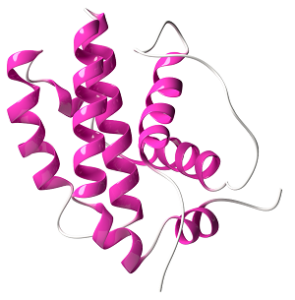Market Overview :
The Thoracic Vascular Stent Grafts Market refers to the global industry focused on the development, production, and sale of stent grafts specifically designed for use in the thoracic aorta. These devices are primarily used to treat conditions such as thoracic aortic aneurysms, dissections, and other life-threatening vascular diseases by providing structural support to weakened blood vessels.
The Thoracic Vascular Stent Grafts Market is experiencing significant growth, driven by the increasing prevalence of thoracic aortic diseases, a rising elderly population, and advancements in minimally invasive surgical techniques. These stent grafts, which combine the flexibility of a stent with the protective covering of a graft, have become essential in endovascular therapy. The market’s expansion is further fueled by the growing adoption of endovascular procedures over traditional open surgeries, as they offer reduced recovery times and lower complication rates.
Key players in the market are investing heavily in research and development to enhance product efficacy, durability, and patient compatibility. Innovations such as customized stent grafts tailored to individual patient anatomy are gaining traction, providing more effective treatment options. Additionally, the market is influenced by favorable reimbursement policies, increased healthcare spending, and a higher awareness of vascular health. However, challenges such as high costs and the need for specialized training for surgeons may restrain growth to some extent.
Get a Sample Copy of the Report to Know More: https://medicalmarketreport.com/report/global-thoracic-vascular-stent-grafts-market/#requestForSample
Key Takeaways:
Growing Demand Due to Aging Population:
The aging global population is a major driver of the Thoracic Vascular Stent Grafts Market. As people age, they become more susceptible to thoracic aortic diseases such as aneurysms and dissections, increasing the need for effective treatment options like stent grafts.
Shift Toward Minimally Invasive Procedures:
There is a noticeable shift from traditional open surgeries to minimally invasive endovascular procedures, which use thoracic stent grafts. These procedures are favored because they reduce recovery times, minimize surgical risks, and improve overall patient outcomes.
Technological Advancements:
Ongoing technological innovations are enhancing the quality and effectiveness of stent grafts. Key advancements include improved materials that offer better flexibility and durability, as well as customizable stent grafts designed to fit the unique anatomy of individual patients.
Increased R&D Investment:
Leading companies in the market are heavily investing in research and development to create next-generation stent grafts. These efforts aim to improve the safety, performance, and long-term durability of the products, which is expected to further drive market growth.
Favorable Reimbursement Policies:
Governments and private insurers are increasingly offering favorable reimbursement policies for endovascular procedures involving thoracic stent grafts. This financial support is making these advanced treatments more accessible to patients, contributing to the market’s expansion.
Challenges in High Costs and Training:
Despite the growth potential, the market faces challenges, including the high cost of stent grafts and the specialized training required for surgeons to perform these procedures. These factors may limit the adoption rate, particularly in emerging markets where healthcare infrastructure is less developed.
Component Analysis:
- Stent Component:
The stent is a critical part of the thoracic vascular stent graft, providing structural support to the blood vessel. It is typically made from durable materials like stainless steel or nitinol, a nickel-titanium alloy known for its flexibility and shape memory.
- Graft Material:
The graft material, usually made from synthetic fabrics such as polyester (Dacron) or expanded polytetrafluoroethylene (ePTFE), forms the tube that covers the stent. This component is essential for preventing blood from leaking through the weakened or diseased sections of the artery.
- Delivery System:
The delivery system is another vital component of thoracic stent grafts. It includes the catheter and sheath used to guide the stent graft to the correct location within the thoracic aorta. The precision and ease of use of the delivery system are crucial for the success of the minimally invasive procedure. Recent innovations have focused on reducing the profile of the delivery system, making it easier for surgeons to navigate through complex vascular structures.
- Anchoring Mechanism:
Ensuring the stent graft remains securely in place after deployment is essential to the procedure’s success. The anchoring mechanism, often involving barbs, hooks, or other fixation devices, is designed to prevent migration of the stent graft within the blood vessel. Improvements in anchoring technology have significantly reduced the risk of complications like endoleaks, where blood continues to flow into the aneurysm sac despite the presence of the graft.
- Customization and Sizing:
Customization of the stent graft’s size and shape to match the patient’s unique anatomy is a growing trend in the market. Proper sizing is critical to prevent complications such as graft migration or endoleaks. Manufacturers are increasingly offering a wider range of sizes and even patient-specific stent grafts, which are tailored to the individual’s vascular structure.
Market Features:
- Strong Market Growth:
- The Thoracic Vascular Stent Grafts Market is experiencing strong growth due to the rising incidence of thoracic aortic diseases, such as aneurysms and dissections. This increasing patient pool is creating a steady demand for stent grafts as a critical treatment option.
- Preference for Endovascular Procedures:
- There is a growing preference for minimally invasive endovascular procedures over traditional open surgeries. This trend is a key feature of the market, as stent grafts are essential for these procedures, offering benefits like reduced recovery times and fewer complications.
- Technological Innovation:
- Technological advancements are a prominent feature of the market. Innovations in stent graft design, materials, and manufacturing processes are enhancing product performance, leading to better patient outcomes. Features such as improved flexibility, durability, and customization options are driving adoption.
- Customization and Patient-Specific Solutions:
- The market is increasingly moving towards patient-specific solutions, with manufacturers developing stent grafts that are tailored to individual patient anatomies. This customization is becoming a critical market feature, as it improves the efficacy of treatments and expands the applicability of stent grafts.
- Regulatory Landscape:
- The market is shaped by a stringent regulatory environment, with agencies such as the FDA and EMA setting high standards for safety and efficacy. Obtaining regulatory approval is a crucial feature for market players, influencing the speed at which new products are brought to market.
Driver:
The primary driver of the Thoracic Vascular Stent Grafts Market is the increasing prevalence of thoracic aortic diseases, including aneurysms and dissections. As the global population ages, the incidence of these conditions rises, leading to a higher demand for effective treatment solutions. Thoracic stent grafts offer a minimally invasive alternative to traditional surgery, which reduces recovery time and lowers the risk of complications, making them a preferred choice among healthcare providers. Additionally, advancements in medical technology have improved the performance and safety of these devices, further boosting market growth.
Trend:
A key trend in the Thoracic Vascular Stent Grafts Market is the shift towards minimally invasive procedures. Endovascular surgery, which utilizes stent grafts, is increasingly favored over open surgeries due to its benefits, such as shorter hospital stays and faster recovery. This trend is driving innovation in stent graft design, with manufacturers developing more flexible, durable, and customizable products to meet individual patient needs. Another notable trend is the growing integration of advanced imaging technologies with stent graft procedures, enhancing precision and outcomes.
Restraint:
Despite the positive growth trends, the market faces several restraints. The high cost of stent grafts and associated procedures can limit accessibility, especially in emerging markets with constrained healthcare budgets. Additionally, the complex nature of these procedures requires specialized training for surgeons, which can be a barrier to widespread adoption. Regulatory hurdles also pose challenges, as gaining approval for new devices involves rigorous testing and compliance with stringent safety standards, potentially delaying product availability.
Opportunity:
The Thoracic Vascular Stent Grafts Market presents significant opportunities for growth. Expansion into emerging markets, where rising healthcare investments and increasing prevalence of vascular diseases create demand, represents a key opportunity. Additionally, ongoing advancements in stent graft technology, including the development of personalized solutions and integration with next-generation imaging techniques, offer pathways for innovation and market expansion. Companies that can address cost barriers and leverage new technologies are well-positioned to capitalize on these opportunities.
Key Players Analysis:
In the Thoracic Vascular Stent Grafts Market, major players like Home Instead Inc., Amedisys Inc., and Kindred Healthcare LLC are significant contributors. These companies are known for their extensive healthcare networks and emphasis on advanced medical solutions. Home Instead Inc. focuses on home care services, providing support for patients with vascular conditions, while Amedisys Inc. and Kindred Healthcare LLC offer a range of home health and hospice services, including vascular care, which indirectly supports the use of stent grafts.Seymour Health and SENIOR CARE CENTERS OF AMERICA INC are also notable players. Seymour Health provides comprehensive medical services, including innovative treatments for vascular diseases, which may incorporate stent graft technologies. SENIOR CARE CENTERS OF AMERICA INC focuses on senior care facilities, contributing to the market by enhancing elderly care through advanced vascular treatment options.
- Home Instead Inc.
- Amedisys Inc.
- Kindred Healthcare LLC
- Seymour Health
- SENIOR CARE CENTERS OF AMERICA INC
- Other Key Players
If You Have Any Questions About This Report, Please Reach Out to Us https://medicalmarketreport.com/report/global-thoracic-vascular-stent-grafts-market/#inquiry
Conclusion:
The Thoracic Vascular Stent Grafts Market is experiencing robust growth driven by several key factors. The increasing prevalence of thoracic aortic diseases among the aging population is a primary driver, creating a rising demand for effective treatment options. Stent grafts, with their minimally invasive nature, offer significant benefits over traditional surgical methods, including reduced recovery times and lower risk of complications. This shift towards less invasive procedures is reshaping the market, with healthcare providers increasingly adopting these advanced technologies.Technological advancements are another crucial aspect of the market’s expansion. Innovations in stent graft design, such as improved materials and customizable solutions, are enhancing the performance and safety of these devices. Integration with advanced imaging technologies is also improving the precision of stent graft placements, further driving market growth.
Contact us
Market.us (Powered By Prudour Pvt. Ltd.)
Address: 420 Lexington Avenue, Suite 300,
New York City, NY 10170, United States
Tel: +1 718 618 4351
Email:[email protected]



